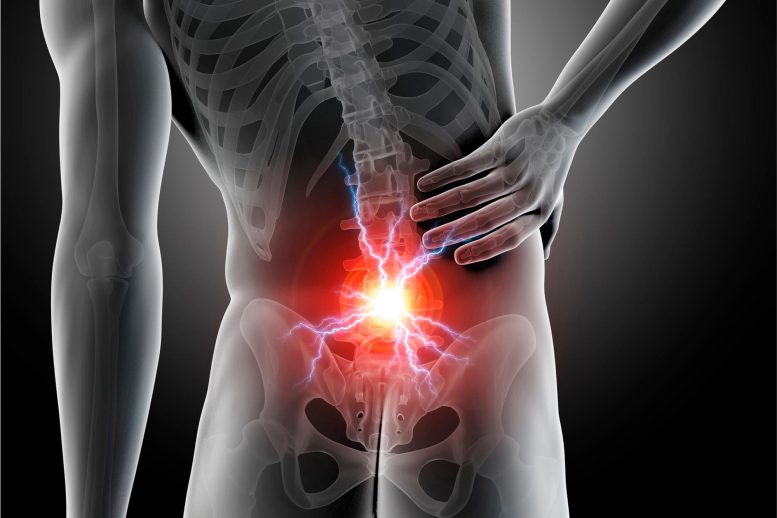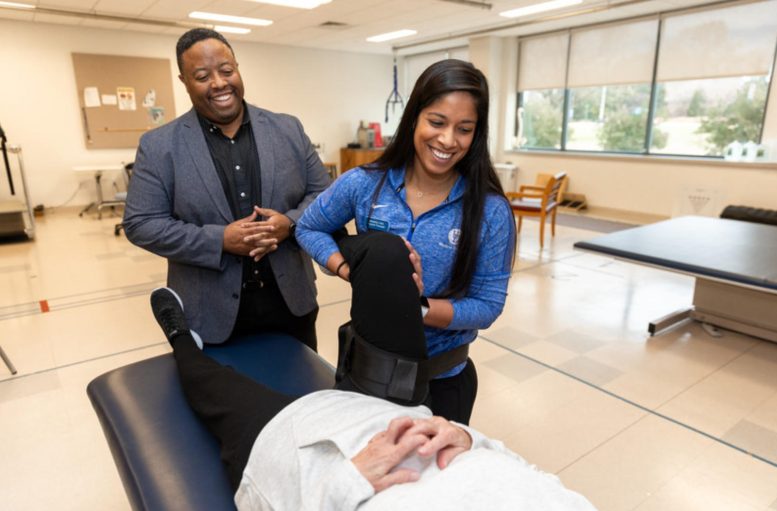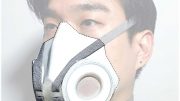
Recent research has made significant strides in treating chronic low back pain in people over 60, revealing that hip-focused therapy can effectively reduce disability and improve mobility. This challenges the prevailing notion that older adults should receive less attention for musculoskeletal issues.
The first-ever clinical trial focuses on precision medicine specifically for older adults, a group often overlooked in musculoskeletal research.
Two decades ago, when Gregory Hicks of the University of Delaware began his research career, he was among a small group in the United States focusing on chronic low back pain in individuals over 60.
Fast-forward to today, the research on back pain has ramped up, yet studies of older adults with the problem are still sparse.
“Unfortunately, the societal attitude is that older people don’t warrant the same level of care that younger people do when it comes to musculoskeletal problems,” said Hicks, Distinguished Professor of Health Sciences at UD. “But I don’t believe that for a minute.”
Hicks, a research champion aiming to improve the health of older adults, “has their back” in more ways than one.
“I’ve always loved working with this age group,” he said. “Just as there are health disparities due to race and ethnicity, being older leads to under-treatment of pain. Older people are told there’s really nothing we can do about it, but that’s simply not true.”
With support from the National Institute on Aging, part of the National Institutes of Health, Hicks recently led a clinical trial with researchers at UD, Duke University and the University of Pittsburgh to test new ways of treating chronic low back pain in adults 60 to 85 years old.
The MASH Clinical Trial and Its Findings
The study, called the Manual Therapy and Strengthening the Hip (MASH) Trial, is believed by the research team to be the first clinical trial to assess the efficacy of a tailored physical therapy intervention matched to an at-risk subgroup of older adults with chronic low back pain and coexisting hip pain and muscle weakness.
Conducted between November 2019 and April 2022, the study involved 184 participants who were randomly assigned to either hip-focused or spine-focused therapies delivered at the researchers’ locations over an eight-week period, including at the Physical Therapy Clinic on UD’s Science, Technology and Advanced Research (STAR) Campus. The study participants were evaluated for pain-related disability, walking performance (speed and endurance), and the ability to rise after being seated in a chair.

University of Delaware professor Gregory Hicks, a research champion aiming to improve the health of older adults, is shown monitoring treatment with physical therapist Natasha Lobo at the Physical Therapy Clinic on UD’s Science, Technology and Advanced Research (STAR) Campus. Credit: Ashley Barnas Larrimore/ University of Delaware
The findings, recently published in The Lancet Rheumatology, indicate that while both therapies improved walking speed similarly, the hip-focused therapy resulted in a greater reduction in disability from low back pain immediately following the eight-week intervention, but no difference at six months.
“So essentially, the people who received the hip-focused intervention get better faster, in terms of low back pain disability,” Hicks said. “The other group with the spine-focused therapy catches up, but it takes longer.”
However, further analyses found that 46% of participants in the hip-focused group and 33% in the spine-focused group had a substantial improvement in disability scores (50% or greater reduction in disability scores) while 53% of the hip-focused participants and 60% of the spine-focused participants had substantial improvement in gait speed. In addition, the hip-focused treatment was associated with greater improvements in chair-rise performance at six months and walking endurance at eight weeks and at six months.
All low back pain is not the same
The MASH clinical trial builds on the results of Hicks’ previous NIH-funded research, which was a longitudinal study following older adults with chronic low back pain for one year, specifically examining the role of hip impairments relative to low back pain and overall physical function.
“It’s becoming quite clear,” Hicks said, “if you make the assumption that all low back pain is the same, you’re wrong. If you can identify sub-groups of low back pain patients with similar traits, you can develop matched treatments, which hopefully lead to better outcomes.”
Distinct chronic low back pain sub-groups came to light with the aid of artificial intelligence and modeling tools — one sub-group had significant issues with hip weakness and hip pain, another had significant hip weakness without hip pain, and yet another had no issues with the hip at all.
As each sub-group emerges, so does the prospect of precision medicine and precision rehabilitation.
“My training is in epidemiology, in identifying risk factors,” Hicks said. “We observe first, understand what’s happening, and then intervene. We’ve made the first step into intervention now for this low back pain subgroup with hip weakness and pain — the hip-focused group did better than the spine-focused group in pain-related disability, chair rise performance, and walking endurance. We have more work to do to refine this hip-focused physical therapy intervention. So, in our next clinical trial, we will be working to tighten that up and develop treatment approaches for the other two subgroups.
“I’ve always had this sort of special place in my heart for this older age group,” Hicks said. “When I started this work, there were a lot of naysayers. I’d tell them, ‘Read the literature — why are we excluding older adults from low back pain research?’ We all hope to get older. Why ignore a place in time where we all hope to end up?”
According to the World Health Organization, low back pain is the leading cause of disability globally. Cases around the world have increased by 60% in the past 30 years.
Reference: “Hip-focused physical therapy versus spine-focused physical therapy for older adults with chronic low back pain at risk for mobility decline (MASH): a multicentre, single-masked, randomised controlled trial” by Gregory E Hicks, Steven Z George, Jenifer M Pugliese, Peter C Coyle, J Megan Sions, Sara Piva, Corey B Simon, Joseph Kakyomya and Charity G Patterson, January 2024, The Lancet Rheumatology.
DOI: 10.1016/S2665-9913(23)00267-9
This research was supported by National Institute on Aging grant R01AG041202. ClinicalTrials.gov identifier: NCT04009837.









When I came across his motto of the left wing wokies, ““Just as there are health disparities due to race and ethnicity,” I began losing interest. I did finish the article and thought that this fellow is a great self promoter broadcasting his love of older people while describing “research” on a small group of people. I wonder if his ethnicity helped a whole lot in getting awards from the government?
I’m older than 60 and I’ve had 4 lumbar back surgeries over 30 years for herniated disks and decompressions. I’m unsure if they were all necessary but I got talked into them. But at least I never allowed myself to get talked into a fusion surgery, which almost every spine surgeon I visited tried to push.
PT can be helpful, especially for all the senior people who are not in shape, which is the vast majority. But everyone should at least try PT.
If you are in good physical shape and PT doesn’t help, try epidural shots. I get 2 or 3 yearly at either L5/S1 or L5/L4.
About 6 months back I got a new type of shot called an allograft in the L5 disc from a company named Vivex that is supposed to pump up a collapsed disc and restore your spine geometry, which should help with sciatica pain as pressure on nerves should be reduced. I believe it worked in my case and pains down my left leg decreased. However, I was unable to get a 2nd scheduled shot at L4, because there is some issue with Medicare coverage, which is disappointing. BTW: The shot was expensive (Medicare paid something around $8000) for the shot, which took maybe 15 minutes to apply. I am unsure if other insurance companies might cover this new technology shot.
Despite my above history of back issues, I currently do around 1000 miles of hiking/jogging annually with a good amount of elevation gain on each outing without significant back or legs pain.
About time that someone recognised that we oldies like to keep mobile and that constant back and hip pain are exceedingly effective disincentives for us doing just that. As for cynical comments about the “wokeness” of considering ethnicity during such research………Ethnicity certainly affects which ethnic group develops wrinkly facial skin earlier than the other ethnicities. So just maybe there is an ethnic factor in the propensity to develop back and hip problems; collagen is involved in all sorts of tissues in the body.